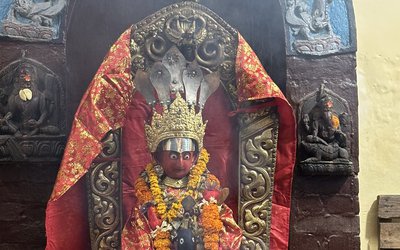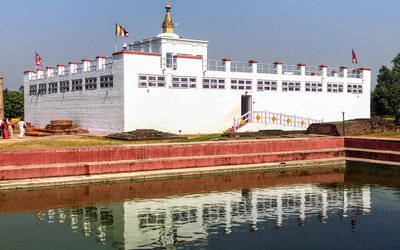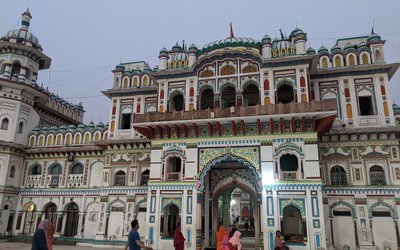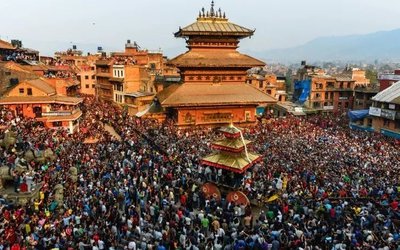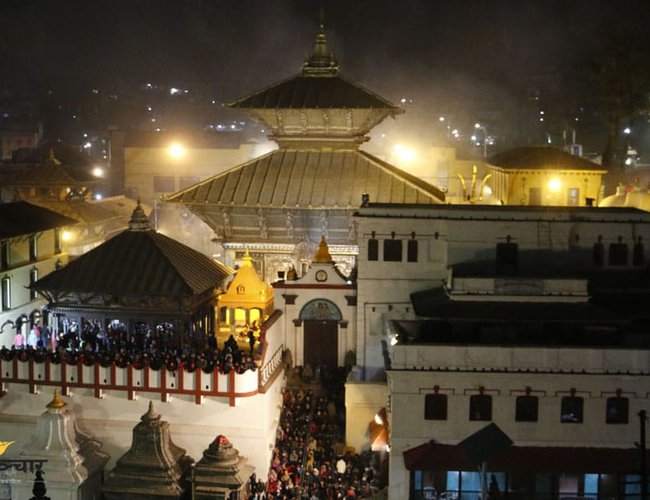
All preparations have completed to celebrate Bala Chaturdashi, which is one of the famous festival in Nepal, today (Dcember 6).
Bala Chaturdashi celebration is also known as Satbij Chharne Aaushi in Nepali. This celebration Bala Chaturdashi of Nepal is seen at blessed place of Nepal, Sleshmantak .
Sleshmantak forest is situated to the opposite side over the Baghmati River or est of Pashupatinath Temple. Bala Chaturdashi celebration falls on Marga Krishna Chaturdashi. As per English Calendar, it falls during late November or early December. As per Nepali Calendar, this year it falls on December 6.
On this Bala Chaturdashi celebration, larger number of Hindus and Buddhist from different parts of Nepal and India assembled at Bagmati to celebrate it.
Bala Chaturdashi or Satbij Charni Ausi is observed at Sleshmantak forest.
People light traditional oil lamp (diyo) and recite mantras. They awake all night to ensure that the lamp keeps burning. The devotees chant mantras and Bhajans and dance through night paying honor to Lord Shiva.
After bathing in the Baghmati River pilgrims visits and worships almost all of the temples and idols in and around Pashupatinath as much they can. The devotees pass dropping the satbij, the mixture of seven sacred seeds in these temples and the 108 Shiva Linga present in the vicinity of Pashupatinath Temple. It passes through Kailash forest and return back to the Pashupatinath temple.
The end part of Satbij droping ceremony is done for fun after long walk and rituals. Lord Ganesh’s idol present near the Bishwaroop temple is believed to be deaf; people shake him and scream and shout in the ear to wake him up. This adds a fun flavor to the whole ceremony.
Why people observer Bala Chaturdashi?
Seeds are dropped in remembrance of dead beloved ones. It is believed by performing Bala Chaturdashi rituals we can secure a better place in heaven for the dead relatives. It is also believed that this helps settle the restless souls of departed ones who were not properly burnt. This is true that when thousands of people pray for the same consideration, that will be fulfilled.
Slesmantak forest, where the satbij is dropped is mentioned in Shiva Puran Mirgasthali as the place where lord Shiva dwelled as Deer. This place is hence considered very sacred place and hence a drop of seed in this place is equal to a Ratti of gold (which is about 0.121 grams).
Local Story On Balachaturdashi
According to story, Bala Nanda, a trader, came to Arya Ghat (where people are cremated through burning), to attend funeral of one of his relatives. Bala Nanda sitting nearby and eating the ceremonial food, a small portion of the dead body popped out from the fire into his plate. He unknowingly swallowed flesh of dead body that fell into his plate. Soon he swallowed the flesh he transformed into a horrible demon having silver head. He became cannibal. Bala Nanda suddenly grabbed out dead body from the fire and started eating it. People were terrified and ran away.
Then onwards he is called Balsur or Demon. Arya Ghat then became the favorite place for Balasur. People were scared to go to Arya Ghat to cremate dead relatives. People pleaded then king to solve the problem. King assigned Brisha Singh, very good friend of Balasur to kill him. Brisha manage to kill Balasur by betrayal.
Brisha felt guilty to deceive Bala. He went to meditation in the Sleshmantak Ban (forest) and enchanted Om and prayed to Lord Shiva for the rescue of his friend Balasur. Lord Shiva was pleased by his sincere affection for his friend. Lord Shiva helped in salvation of Balasur. Lord Shiva also told Brisha to scatter sat bij, or seven varieties of grain, on the holy grounds of the Shlesmantak forest to cleanse the sin of Balasur and to erase his own guilt for killing a friend. From the day, the tradition of Dropping Seven Grains (Sat biu) started.
- India Supported Construction Of Four Schools In Nuwakot
- Mar 19, 2021
- Nepal Denies Permission For Third Phase Trial Of Vaccine Against COVID-19
- Aug 31, 2020
- Messi Can Only Cancel Barcelona Contract If €700 Million Release Clause Is Paid, La Liga Confirms
- Aug 31, 2020
- India To Carry Out Study On Kathmandu-Raksaul Railway
- Aug 28, 2020
- COVID-19: 1,351 Personal Of Nepal Police Infected
- Aug 28, 2020


